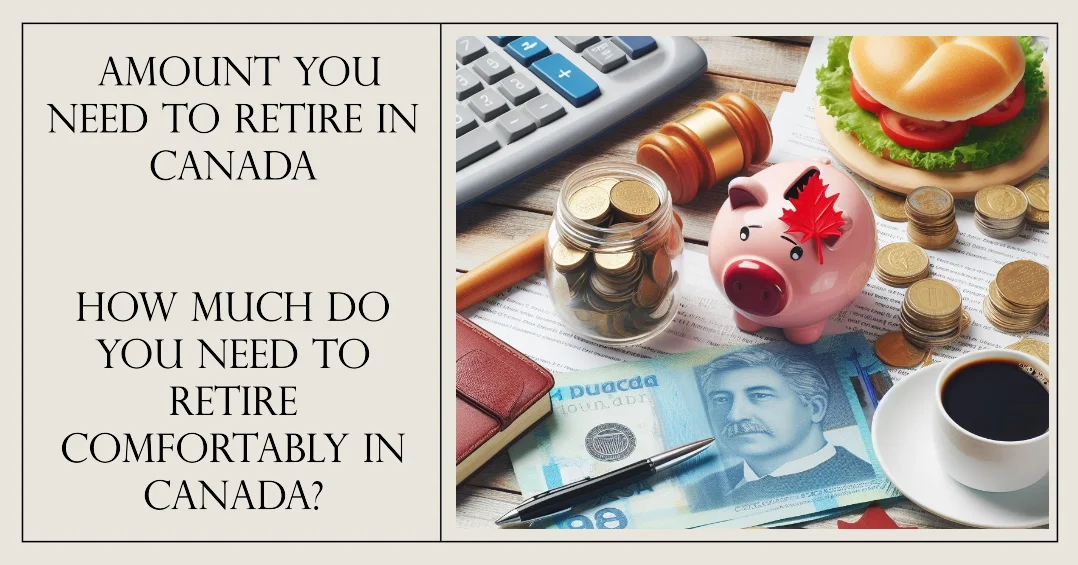For Advertising Contact Us
Amount You Need to Retire in Canada – How Much Do You Need to Retire Comfortably in Canada?

#Comfortably settling into retirement in Canada requires careful financial planning and a clear understanding of your future financial needs. Determining the amount you need to retire comfortably involves considering various factors such as living costs, healthcare expenses, and potential inflation. In this guide, we will break down the key aspects to help you calculate precisely how much you need to retire in Canada without compromising your lifestyle. Let’s look into the necessary details to ensure a secure and stress-free retirement phase.
Types of Retirement Funds in Canada
Your retirement in Canada can come from various sources, including government benefits and pensions, personal savings, and investment vehicles. It is important to understand the different types of retirement funds available to ensure you have a comfortable retirement.
| Government Benefits and Pensions | Personal Savings and Investment Vehicles |
| Canada Pension Plan (CPP) | Registered Retirement Savings Plan (RRSP) |
| Old Age Security (OAS) | Tax-Free Savings Account (TFSA) |
| Guaranteed Income Supplement (GIS) | Employer-sponsored Pension Plans |
| Quebec Pension Plan (QPP) | Other Personal Investments (e.g., Stocks, Mutual Funds) |
Government Benefits and Pensions
On top of the list of retirement funds are government benefits and pensions. In Canada, the main government programs include the Canada Pension Plan (CPP), Old Age Security (OAS), and the Guaranteed Income Supplement (GIS). These programs provide a basic level of income support for retirees.
Personal Savings and Investment Vehicles
Investment in personal savings and various investment vehicles plays a crucial role in funding retirement in Canada. Registered Retirement Savings Plans (RRSPs), Tax-Free Savings Accounts (TFSAs), employer-sponsored pension plans, and other personal investments such as stocks and mutual funds are popular choices for Canadians planning for retirement. It is crucial to diversify your investments and seek professional advice to maximize your retirement savings.
After carefully considering all available options, it is recommended to create a retirement plan that includes a combination of government benefits, personal savings, and investment vehicles to ensure a comfortable and secure retirement in Canada.
Factors Influencing Your Retirement Funds
Even though retirement may seem far off, it’s imperative to start planning early to ensure you have enough funds to retire comfortably. There are several factors that can influence the amount you need to save for retirement.
Lifestyle Expectations
Little aspects such as the type of lifestyle you envision during retirement greatly impact how much you need to save. Do you plan to travel frequently, dine out often, or pursue expensive hobbies? All these factors will determine the level of savings required to maintain your desired lifestyle after retirement.
Inflation and Cost of Living
While inflation and the rising cost of living may seem distant concerns, they can significantly impact your retirement funds. As prices increase over time, your purchasing power diminishes, necessitating a larger retirement fund to maintain your standard of living. It’s crucial to consider these factors when calculating how much you need to save for retirement.
Another important aspect to consider is the longevity of retirement. With increasing life expectancy, retirees are spending more years in retirement, leading to higher expenses. This highlights the importance of factoring in potential medical costs and long-term care when planning for retirement.
Knowing these factors can help you make informed decisions about your retirement savings and ensure a financially secure future. Start planning early and consult with a financial advisor to create a personalized retirement plan that aligns with your goals and expectations.
Step-by-Step Guide to Planning Your Retirement
Assessing Your Current Financial Situation
| Step | Description |
| 1 | Calculate your current assets and liabilities |
| 2 | Assess your income sources and expenses |
| 3 | Evaluate your current savings and investments |
Little is more important in retirement planning than assessing your current financial situation. By understanding where you stand today, you can make informed decisions about how to reach your retirement goals.
Setting Retirement Goals and Creating a Savings Plan
| Step | Description |
| 1 | Determine your desired retirement lifestyle |
| 2 | Estimate your retirement expenses |
| 3 | Create a savings plan and set milestones |
There’s no one-size-fits-all approach to setting retirement goals and creating a savings plan. It’s important to customize your plan based on your lifestyle preferences, retirement aspirations, and financial capabilities.
This process involves setting specific and achievable financial goals for retirement and creating a detailed savings plan to help you reach those goals. By outlining clear milestones and timelines, you can track your progress and make adjustments as needed to stay on track towards a comfortable retirement in Canada.
Tips for Maximizing Your Retirement Savings
Many individuals underestimate the amount they need to save for retirement. To ensure a comfortable retirement in Canada, it is important to maximize your savings through smart strategies. Consider the following tips to boost your retirement fund:
- Start saving early and take advantage of compound interest.
- Maximize contributions to your Registered Retirement Savings Plan (RRSP) and Tax-Free Savings Account (TFSA).
- Diversify your investment portfolio to mitigate risk and optimize returns.
- Consider seeking guidance from a financial advisor to create a tailored retirement plan.
Thou should regularly review and adjust your retirement savings strategy to stay on track to meet your financial goals.
Investment Strategies for Growth
Investment strategies for growth are necessary to maximize your retirement savings. It is crucial to diversify your investments across different asset classes such as stocks, bonds, and real estate. Consider investing in low-cost index funds or exchange-traded funds (ETFs) to reduce fees and improve long-term returns. Additionally, explore opportunities in high-growth sectors or emerging markets to capitalize on global economic trends.
Budgeting and Reducing Expenses
If you want to maximize your retirement savings, budgeting and reducing expenses are key strategies to implement. Start by creating a detailed budget to track your income and expenses. Identify areas where you can cut back on unnecessary spending, such as dining out less frequently or cancelling unused subscriptions. Consider downsizing your home or finding ways to reduce monthly bills to free up more money for retirement savings.
Strategies such as meal planning, buying in bulk, and using coupons can also help lower your monthly expenses and increase your savings potential. By being mindful of your spending habits and making small adjustments, you can significantly impact your long-term financial stability in retirement.
Pros and Cons of Early Retirement
Advantages of Retiring Early
Pros: Early retirement can offer the opportunity to enjoy more free time, pursue passions and hobbies, and spend quality time with loved ones. It allows for a break from the daily grind of work and may lead to a healthier and more fulfilling lifestyle.
Potential Drawbacks and Financial Implications
There’s: Early retirement also comes with its own set of challenges. One major consideration is the financial aspect – retiring early means relying on savings and investments to cover living expenses for potentially a longer period of time. This can put a strain on finances and require careful planning and budgeting to ensure a comfortable retirement.
Financial: Additionally, retiring early may lead to a reduced pension income or social security benefits compared to retiring at a later age. It’s necessary to consider the long-term financial implications and make sure that retirement savings are sufficient to last throughout the retirement years. Planning ahead and consulting with a financial advisor can help mitigate some of these risks.
Conclusion
Now you have a better understanding of the amount you need to retire comfortably in Canada. By considering factors such as your desired lifestyle, healthcare needs, and inflation, you can create a comprehensive retirement plan that will ensure financial security during your golden years. It is crucial to start saving and investing early to reach your retirement goals and consult with a financial advisor to tailor a strategy that aligns with your individual needs and circumstances. With careful planning and wise financial decisions, you can enjoy a comfortable retirement in Canada.



